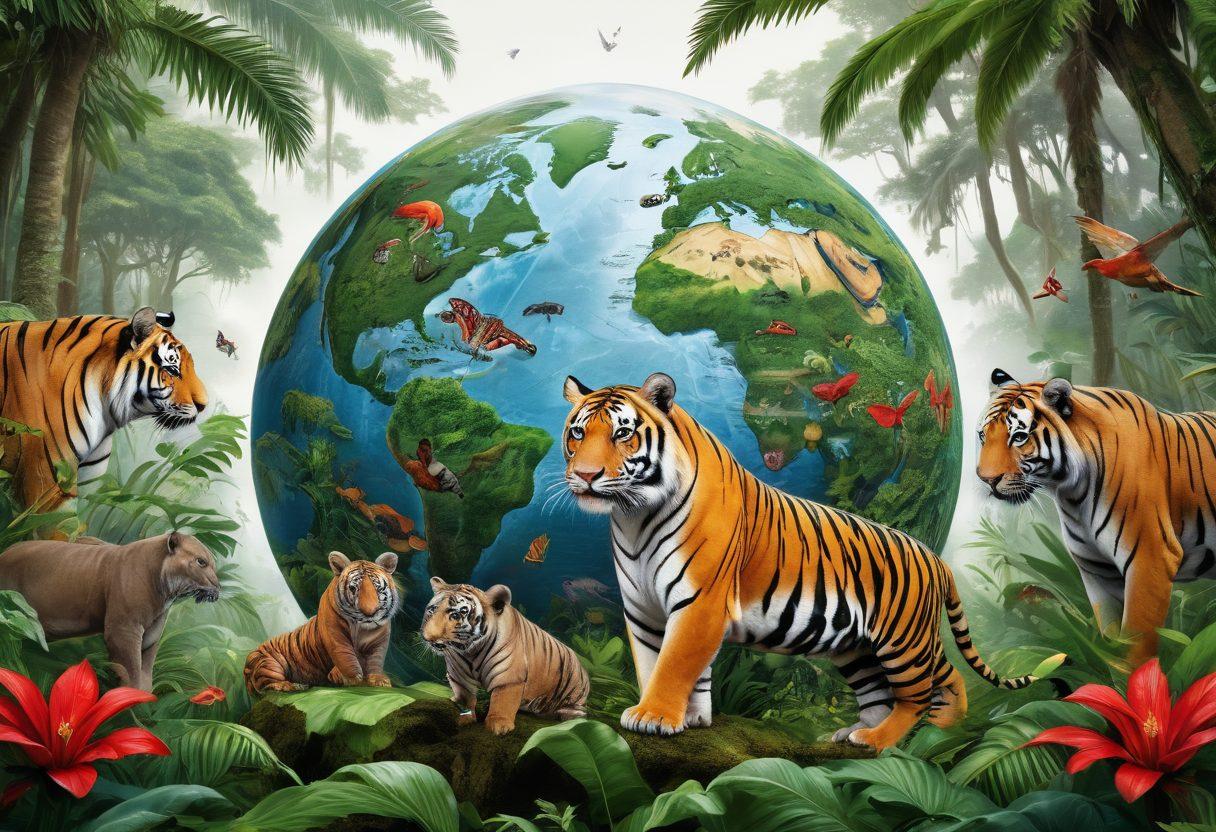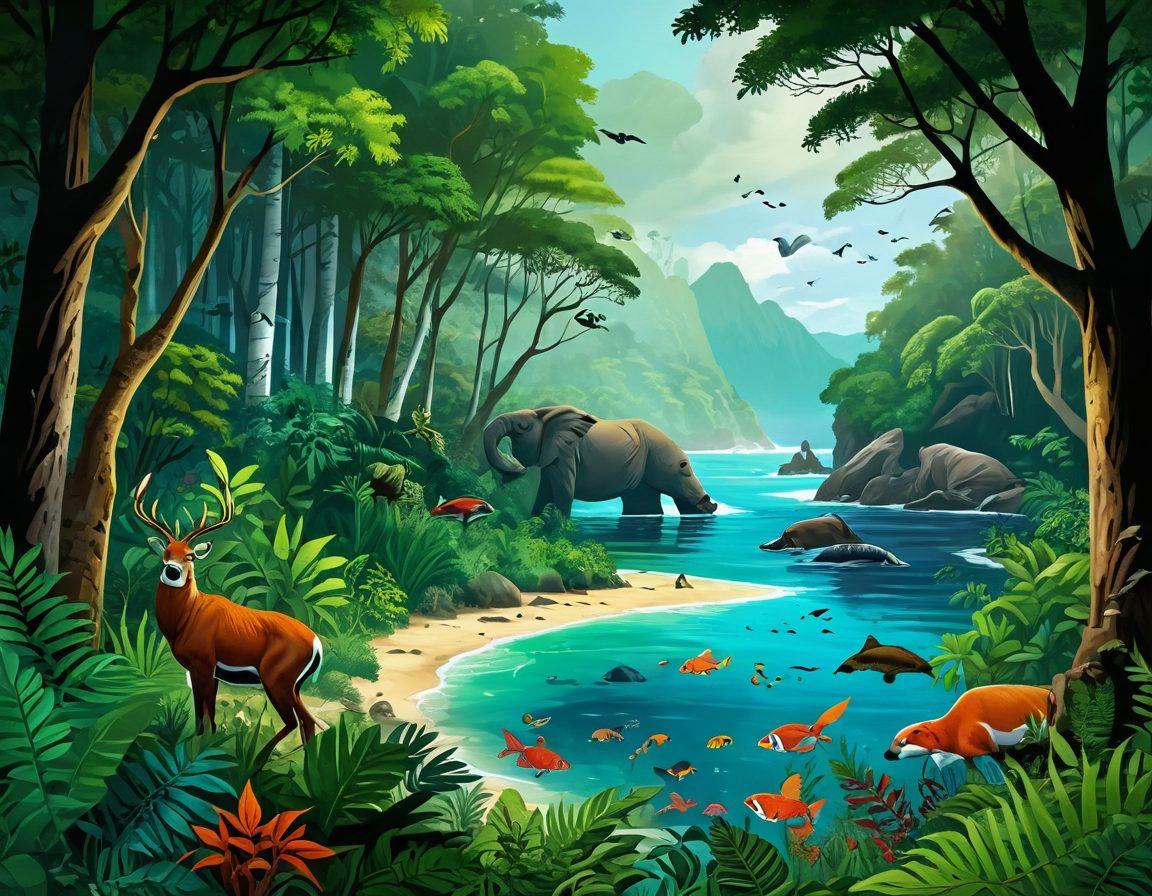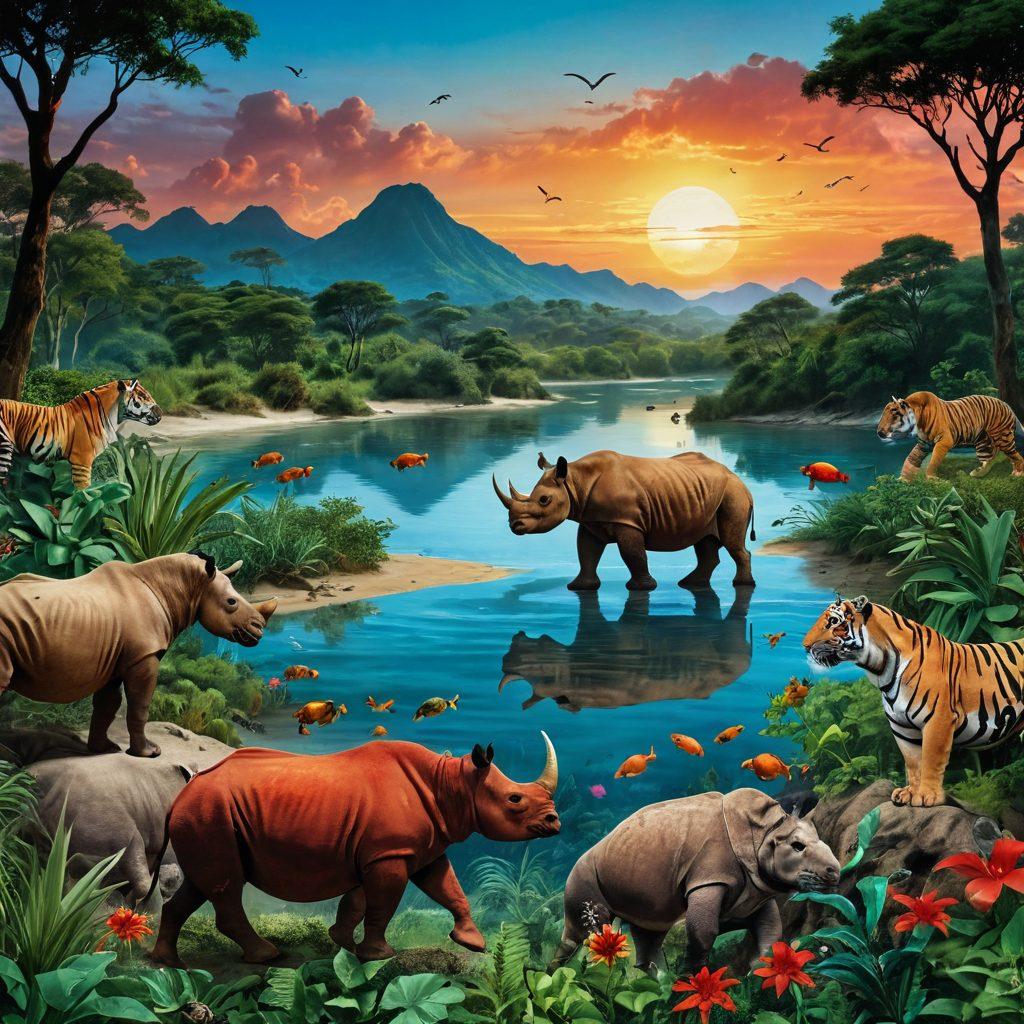Understanding the IUCN Red List: A Guide to Assessing Endangered Species and Biodiversity Conservation
When it comes to protecting our planet's precious wildlife, understanding the intricacies of the IUCN Red List can feel like peering through a fuzzy lens. The International Union for Conservation of Nature (IUCN) has compiled a comprehensive catalogue that serves as a guide in identifying the conservation status of various species. But why does this matter? Think of the Red List as a global barometer of our planet's health. It raises a simple yet profound question: How can we preserve our biodiversity and ensure a sustainable future for generations to come?
The IUCN Red List categorizes species based on rigorous evaluations, classifying them into groups such as 'endangered species' and 'threatened species.' Did you know that, as of now, approximately 28,000 species are at risk of extinction? This staggering number might leave you wondering about the state of our ecosystems and the fauna that inhabit them. Why should we be worried about these figures? Each species plays a vital role in its ecosystem, and losing even the smallest creature can create a domino effect, ultimately impacting the environment we rely on.
You may be asking yourself, 'What can I do to help?' Well, understanding the conservation status of animals and plants is a significant step towards taking action. By familiarizing yourself with the data presented by the IUCN Red List, you can become a well-informed advocate for wildlife preservation and habitat conservation. Imagine a world where our actions today result in healthier ecosystems tomorrow. You, too, can contribute to species monitoring and environmental protection efforts in your community—a meaningful endeavor that connects us to the intricate web of life around us.
The IUCN's mission goes beyond just listing endangered species; it embodies a commitment to environmental sustainability and conservation biology. Through their work, they provide essential insights into species evaluation that can guide decisions in wildlife conservation. The question remains: How can you incorporate this knowledge into your daily life? From supporting local conservation efforts to simply becoming more aware of the flora and fauna in your vicinity, every small step counts. Why not challenge yourself to learn about a new endangered species each week? Your journey towards understanding will spark conversations that can influence others to join the cause.
In conclusion, navigating the IUCN Red List might seem daunting at first, but it's an essential tool for anyone passionate about biodiversity conservation. As we face pressing environmental challenges, we must remember that the science of conservation is not solely the responsibility of researchers and policymakers; it lies within all of us. Imagine what change we could create if every conservation enthusiast became an ambassador for the Red List. Together, we can protect our planet's invaluable ecosystems, preserving them for future generations to thrive. Are you ready to take the first step?
Exploring Endangered Species: The Role of the IUCN in Biodiversity Efforts
Imagine a world where the roar of a lion or the melody of a songbird is silenced forever. The thought is haunting, yet it is a reality that faces us if we do not act to protect endangered species. Each year, the International Union for Conservation of Nature (IUCN) compiles the Red List, a comprehensive assessment of the conservation status of global flora and fauna. But what does the IUCN Red List truly represent, and how does it play a crucial role in biodiversity efforts? Let’s dive into the importance of the IUCN in safeguarding our planet's wildlife and ecosystems.
Creating one of the most important tools for environmental protection and species conservation, the IUCN Red List categorizes species based on their risk of extinction. Each entry reflects a long, intricate evaluation process that encompasses scientific research and field studies, aiming to highlight species diversity and the threats they face. It's crucial to understand these categories, from 'Least Concern' to 'Critically Endangered'. Have you ever wondered what it takes for a species to be marked as endangered? These assessments often reveal the struggles that animal and plant populations confront due to habitat loss, climate change, and human encroachment, emphasizing the importance of habitat conservation and responsible management of our natural resources.
Biodiversity is the backbone of a healthy ecosystem, supporting the intricate web of life on Earth. A strong plea is made for the importance of protecting threatened species, as their decline can signal broader environmental issues and impact species monitoring efforts. 'For us to conserve our wildlife effectively, we must first understand the intricacies of our ecosystems,' said an IUCN representative. This understanding helps foster environmental awareness and encourages a collective effort towards sustainable development and habitat protection. Have you noticed how the smallest changes in our local environment can lead to significant changes in wildlife populations?
The IUCN's ongoing commitment to conservation biology doesn't just stop at identifying endangered species; it actively promotes actionable steps towards species evaluation and habitat protection. For instance, initiatives like the Species Survival Commission mobilize scientific expertise for conservation actions, thus facilitating better strategies for wildlife preservation. The challenges may be numerous, but the rewards of restoring biodiversity to our worlds are staggering. Have you ever thought about how participating in local conservation efforts can contribute to a much larger goal?
Ultimately, the role of IUCN in biodiversity efforts is monumental. While the numbers in the Red List can be daunting, it ignites a passionate spark in conservationists and advocates alike. The need for continuous, effective species assessment cannot be overstated. Public participation, awareness campaigns, and community involvement all play pivotal roles in reversing the trends of species decline. With practical gardening tips to support local endangered species or programs to eliminate plastic waste affecting marine ecosystems, every action counts. So what will you do today to make a difference in the fight for our planet's biodiversity?
From Evaluation to Action: How the IUCN Red List Shapes Wildlife Conservation Strategies
When we think about the fabric of our world, we often picture beautiful landscapes and diverse ecosystems bursting with life. Unfortunately, the reality is that many of these environments are under threat. The International Union for Conservation of Nature (IUCN) Red List plays a crucial role in assessing the conservation status of various species across the globe. This powerful tool not only sheds light on endangered and threatened species but also helps in shaping wildlife conservation strategies. But how does the IUCN Red List transition from evaluation to concrete action in the field of conservation biology? Let’s explore this vital connection.
The journey begins with species assessment and evaluation. The IUCN Red List employs a comprehensive methodology to categorize species into various levels of threat. While many may view this as just a classification system, it is much more than that. It serves as a clarion call for environmental protection, urging governments, organizations, and individuals to step up for wildlife preservation. Have you ever thought about the implications of these classifications on our ecosystems? Just think: every category—from least concern to critically endangered—represents a group of species struggling for survival, each with its unique role in their ecosystem.
Imagine a world where flora and fauna thrive in harmony, supported by a sustainable development framework that prioritizes ecosystem preservation. That's the vision behind the Red List. Not only does it provide species monitoring and evaluation, but it also highlights the importance of habitat conservation. When we know which species are in peril, we can better understand the pressing need to protect their habitats—a task that requires unwavering commitment from all sectors of society. Environmental awareness is key here; educating communities about the plight of threatened species can usher in a new era of proactive conservation initiatives. After all, 'what good is it to achieve progress if we leave countless species behind?'
However, understanding the IUCN Red List is only the first step. Translating that understanding into meaningful action is where the real challenge lies. It’s no secret that biodiversity conservation demands collaboration among various stakeholders including policymakers, conservationists, scientists, and local communities. Herein lies an intriguing question: How can we inspire these groups to come together for the common goal of biodiversity? By fostering partnerships and sharing success stories, we can ignite a passion for nature conservation, reminding people that every small step towards habitat protection counts, and ultimately leads to positive changes in wildlife conservation efforts.
The future of our planet hinges on our ability to adapt our strategies based on the insights provided by the IUCN Red List. With ongoing threats like climate change and habitat loss, it is imperative that we leverage this critical data to navigate the intersection of species conservation and environmental sustainability. Every time we learn about a species' decline, we receive a clear message: action is needed. So, what role can you play in this narrative? Whether it's by advocating for wildlife protection policies, participating in local conservation initiatives, or simply spreading the word about the importance of the IUCN Red List, each voice matters. Let’s embark on this journey together, moving from understanding to transformative action for the biodiversity that enriches our world.


